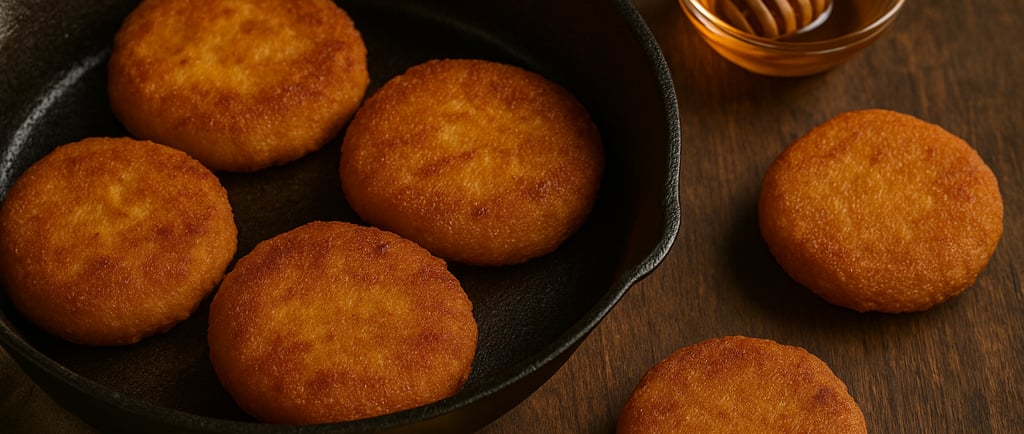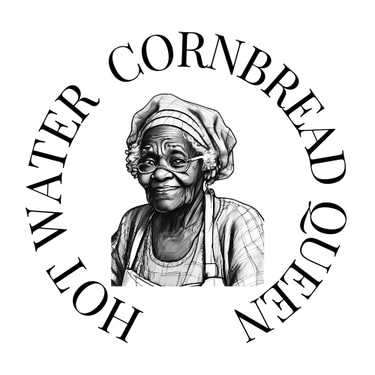The History of Hot Water Cornbread
Discover the rich history and deep roots of hot water cornbread in this heartfelt post. Learn how this simple, beloved Southern staple traveled from African traditions to American kitchens, feeding generations with resilience and creativity. We explore the humble ingredients, the role of cast iron skillets, and the resourcefulness of African American families who turned necessity into a cherished culinary tradition. Perfect for anyone who loves soul food, family stories, and the enduring spirit behind every golden patty.
Tiffany Jones; AI Helper
8/1/20252 min read


Cornbread Chronicles: The History of Hot Water Cornbread
Hot water cornbread has a story as old and enduring as the cast iron skillet it’s fried in. Its roots run deep in the American South, but its soul comes from Africa—brought over in the hands and hearts of enslaved people who made a way out of no way.
Long before store shelves held bags of flour or bottles of oil, African cooks were masters of stretching what little they had. In West Africa, cooks used ground grains and hot water to make simple breads and porridges. When enslaved Africans arrived in the South, they recognized cornmeal as a cousin to the grains they knew back home. With cornmeal, boiling water, and a pinch of salt, they created hot water cornbread—a dish that was both familiar and new, a taste of home in a strange and difficult land.
Back then, nobody had vegetable oil or fancy gadgets. The cast iron skillet was the backbone of every kitchen—heavy, reliable, and able to take the heat. Folks fried their hot water cornbread in lard or tallow, giving each patty a golden, crispy crust and a flavor that can’t be matched. Cast iron holds heat steady and true, making sure every piece comes out just right, no matter how many mouths you had to feed.
Life for African American families was filled with struggle—first through slavery, then through poverty and discrimination in the years that followed. Food was never wasted, and every meal had to go as far as possible. Hot water cornbread became a staple because it was cheap, filling, and could be made with the barest of ingredients. But it didn’t stand alone. Families would stretch meals with rice, beans, greens, and whatever else they could find or grow. A pot of beans with a side of cornbread and some rice could feed a family for days, filling bellies and keeping hope alive.
During the Great Depression, times got even harder. Jobs were scarce, and money was tighter than ever. African American families leaned on the old ways—making meals out of almost nothing, turning scraps into supper. Hot water cornbread was right there, served alongside rice, stewed vegetables, and whatever meat could be spared. It was more than food; it was a symbol of resilience and community, a reminder that even in the hardest times, folks could gather around the table and share what they had.
Today, when I fry up a batch of hot water cornbread in my cast iron skillet, I’m not just making a side dish. I’m honoring generations of strength, creativity, and love. Every bite is a taste of survival, a piece of history, and a celebration of the ingenuity that carried our people through the toughest times.
